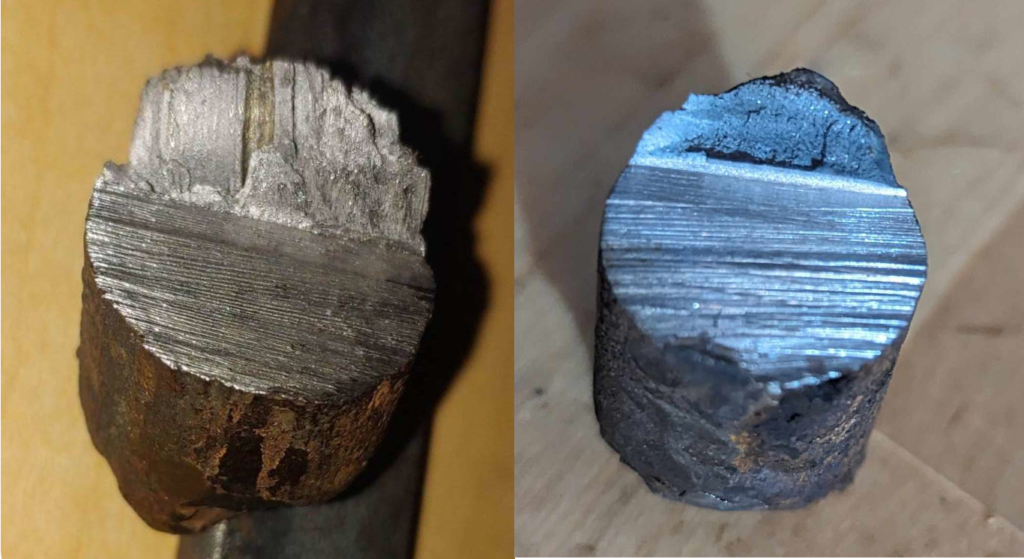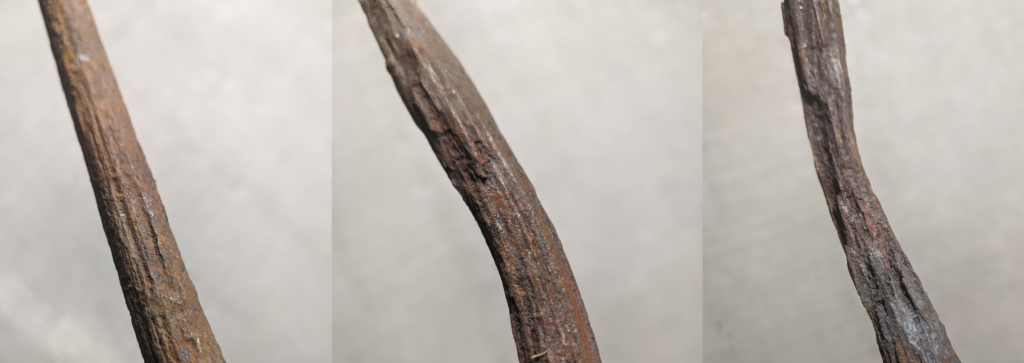
I will start this by saying if you see something being advertised as “wrought iron”, that isn’t what I am discussing here. Unfortunately, it has become a marketing term and that product should instead be called “ornamental iron”. What I am discussing is the actual metallurgical product called wrought iron.
When you see me—or any other blacksmith at a reenactment event—the metal we are forging the vast majority of the time is steel. In period, we would have been using wrought iron.
Wrought iron is iron that was never liquid, and therefore, has an amount of silica slag included in the metal. It also has a very low carbon content. This allows it to be easily forged and forge welded. However, this means modern electric welding doesn’t work as well.
Wrought iron is produced by the bloomery process. A bloomery furnace is an open topped furnace with an additional opening in the bottom front. There would be one or more small holes for air pipes. You cook your iron ore over a fire and this removes some of the impurities and makes it easier to break up. The ore is then crushed. How fine it is crushed is determined by the type of ore. The charcoal is also broken into nut sized pieces. A small wood fire is started inside the furnace and then charcoal and ore is added in layers. While this is happening, bellows are continually pumped to add air to the fire. The typical ratio of charcoal to iron ore is 1:1 by weight. As the furnace is fired, the charcoal uses up the oxygen and causes oxygen to be pulled out of the iron ore, converting iron oxide to iron.
Once all the charcoal is burnt and ore is used, there will be a spongy mass of iron called a bloom. This bloom is taken out of the furnace and worked with hammers at near forge welding heat. This causes the particulates of iron to be forge welded together, and the slag impurities driven out, creating a larger mass. This working is where the term wrought—or worked—iron comes from. Eventually this hammering will create a fairly pure mass of iron.
In the 1850s, the Bessemer process was discovered which allowed us to liquefy iron and remove all the impurities. This also allows us to precisely add exactly the amount of carbon and other additives to create specific alloys. All “iron” produced today is steel—an alloy—not wrought iron.
The surest way to tell true wrought iron is to cut most of the way through a bar and then break the piece off. Wrought iron looks similar to string cheese, steel does not. . You can also sometimes tell wrought iron because when it rusts it looks to have a wood grain from the included silica.

Leave a Reply